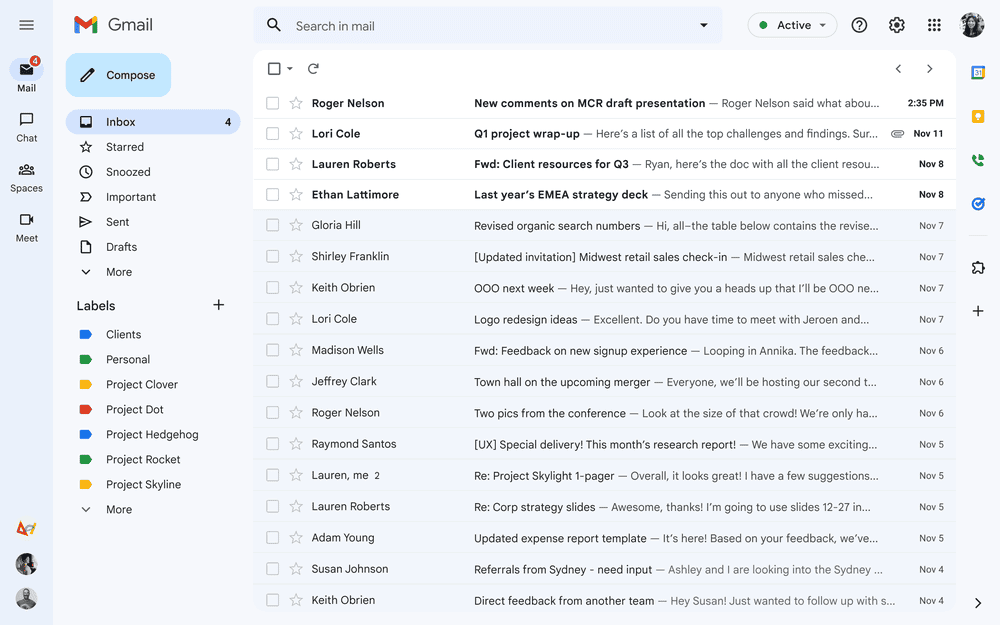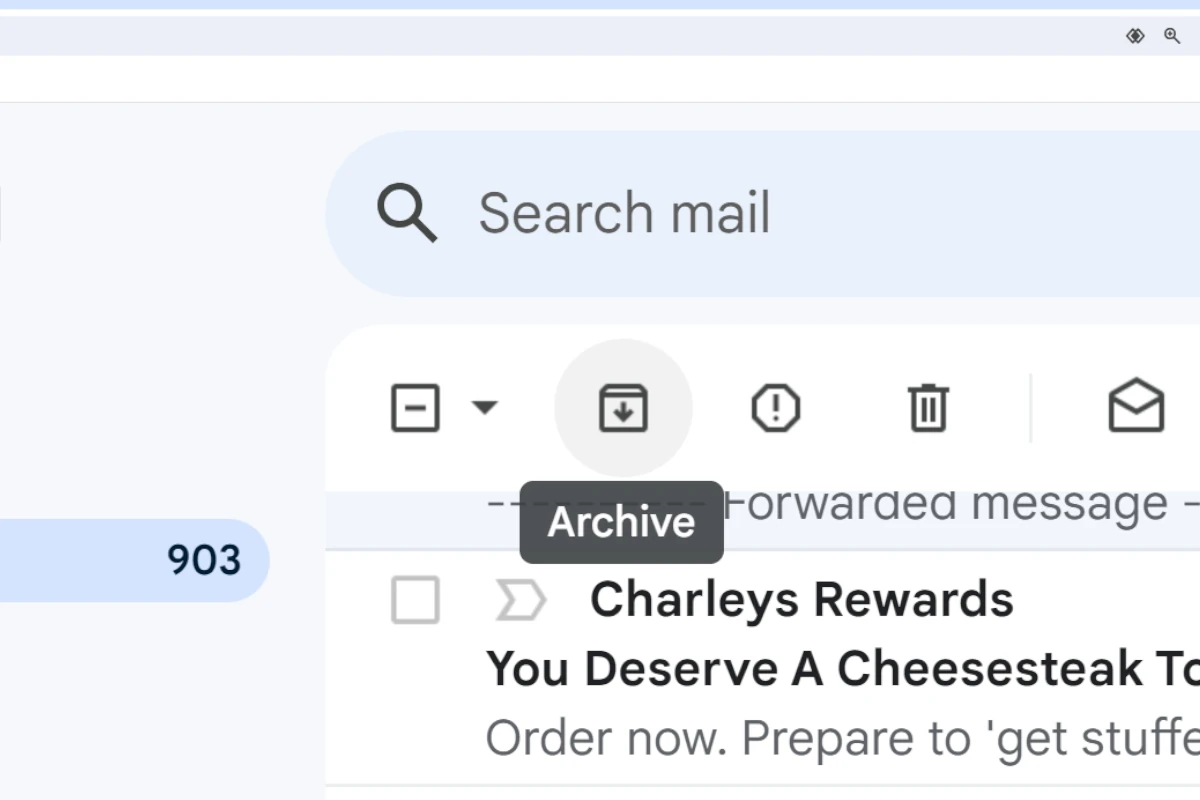Gmail’s archive feature is helpful for keeping your inbox organized. However, if you need to retrieve an archived email, you can easily unarchive it. Simply locate the email in the All Mail folder or search results, and then move it back to your inbox. This process is quick and straightforward. Archiving emails in Gmail is a great way to declutter your inbox without permanently deleting emails. But if you need to bring back some of those archived messages, it’s a simple process, whether you’re using a computer or a mobile device.
This guide will walk you through the steps and explain the differences between archiving and deleting. Unarchiving emails in Gmail works the same on computers and phones. You can search for the email you want or look in the All Mail folder. Once you find it, select the email and click or tap “Move to Inbox.” The email will then show up in your main inbox again. Knowing how to unarchive emails is useful, allowing you to maintain a clean inbox while still being able to access old emails when needed. This skill helps in better email management and finding important messages faster.

Resurrecting Emails: A Guide to Gmail’s Unarchive Feature
Unarchiving Individual Emails on Desktop
- Open Gmail on your computer.
- Use the search bar or navigate to the “All Mail” label to find the archived email.
- Check the box next to the email you want to unarchive.
- Click the “Move to Inbox” button at the top of the screen.

Bulk Unarchiving on Desktop
- Open Gmail and go to the “All Mail” label.
- Search for specific criteria (e.g., “label:archived”) to filter archived emails.
- Select the emails you want to unarchive by checking the boxes next to them.
- Click “Move to Inbox.”
Unarchiving on the Gmail Mobile App
- Open the Gmail app on your phone or tablet.
- Find the archived email (it might appear in search results or the “All Mail” label).
- Tap the email to open it.
- Tap the three-dot menu icon in the top-right corner.
- Select “Move to inbox.”
What Happens When You Archive in Gmail?
Archiving removes an email from your main inbox, making it less cluttered. However, it doesn’t delete the email. Archived emails remain accessible in the “All Mail” label and will still appear in search results.
Why Use the Archive Feature?
Archiving is a handy tool for organizing your inbox without permanently deleting emails. It’s perfect for newsletters, receipts, or other messages you want to keep but don’t need to see in your main inbox.
Differences Between Archiving and Deleting
| Feature | Archiving | Deleting |
|---|---|---|
| Removes from inbox | Yes | Yes |
| Permanently removes | No | Yes |
| Accessible in “All Mail” | Yes | No (unless in Trash for a limited time) |
| Appears in search results | Yes | No |
Key Takeaways
- Archived emails can be found in the All Mail folder or through search
- Moving an archived email to the inbox unarchives it
- Unarchiving works the same on computers and mobile devices
Understanding Gmail Archive
Gmail’s archive feature helps keep your inbox tidy. It moves emails out of sight without deleting them. This tool makes it easy to find old messages later.
Concept of Archiving Emails
Archiving in Gmail moves emails from your inbox to the All Mail folder. The archive icon looks like a box with a down arrow. When you click it, the email leaves your inbox. But it’s not gone forever. You can still find it in All Mail or by using the search bar.
Archived emails keep their labels. This makes them easy to sort and find later. The archive feature is great for emails you don’t need right now but might want later.
Benefits of Using the Gmail Archive Feature
The Gmail archive feature helps organize your inbox. It cuts down on clutter without losing any messages. This makes it easier to focus on new and important emails.
Archiving lets you keep a clean inbox. But you can still find old emails when you need them. The search bar works for archived emails too. You can look for them by sender, subject, or content.
The archive also saves space in your inbox. This can make Gmail run faster on slower devices. It’s a simple way to sort emails without making complex folders.
Steps to Unarchive Emails
Unarchiving emails in Gmail is easy. You can do it on a computer or mobile device. There are also ways to unarchive many emails at once.
Unarchiving Emails on a Computer
To unarchive an email on your computer, open Gmail in a web browser. Click “All Mail” on the left side. This shows all your emails. Find the email you want to unarchive. Click and drag it to “Inbox” on the left side. The email will move back to your inbox.
You can also use the search bar to find archived emails. Type words from the email in the search box. When you see the email in the results, drag it to “Inbox”.
Another way is to open the email and click “Move to Inbox” at the top. This puts the email back in your main inbox right away.
Unarchiving on Mobile Devices
On phones and tablets, open the Gmail app. Tap the menu icon (three lines) and choose “All mail”. This shows all your emails in one place. Find the email you want to unarchive. Tap and hold the email. Then tap the three dots at the top. Choose “Move to Inbox”.
For iPhones and iPads, the steps are the same. Tap the menu, go to “All mail”, find your email, and move it to the inbox.
You can also search for emails in the app. Type in the search bar at the top. When you find the email, follow the same steps to move it to your inbox.
Bulk Actions for Multiple Emails
To unarchive many emails at once on a computer, go to “All Mail”. Click the box next to each email you want to unarchive. Or use the select all box at the top. Then click the “Move to Inbox” button.
On mobile, go to “All mail” in the app. Tap and hold one email, then tap more emails to select them. Tap the three dots and choose “Move to Inbox”. This works for both Android and iOS devices.
Remember, unarchiving emails just puts them back in your inbox. It doesn’t change any labels or other settings on the emails.
Frequently Asked Questions
Gmail users often need to retrieve archived emails. There are different ways to do this on desktop and mobile devices. You can also unarchive multiple emails at once.
How do I retrieve archived emails in Gmail on a desktop?
Open Gmail in your web browser. Click “More” in the left sidebar. Select “All Mail” to see all your emails, including archived ones. Find the email you want to unarchive. Drag it to your Inbox or click the “Move to Inbox” button.
What steps are needed to unarchive an email in Gmail on an Android device?
Open the Gmail app on your Android phone. Tap the menu icon (three lines) and choose “All mail”. Find the archived email you want to restore. Tap and hold the email. Then tap the “Move to Inbox” icon at the top of the screen.
Is there a method to access archived emails on an iPhone’s Gmail app?
Yes, you can access archived emails on an iPhone. Open the Gmail app. Tap the menu icon and select “All mail”. Scroll through your emails to find the archived one. Tap and hold the email, then tap “Move to Inbox” to unarchive it.
Can you unarchive multiple emails at once in Gmail, and if so, how?
You can unarchive many emails at once. Go to “All Mail” in Gmail. Check the boxes next to the emails you want to unarchive. Click the “Move to Inbox” button at the top of the screen. This works on both desktop and mobile versions of Gmail.
What is the process for locating and unarchiving a single email within Gmail?
To find a single archived email, use the search bar at the top of Gmail. Type keywords from the email you’re looking for. When you find it, open the email. Click the “Move to Inbox” button to unarchive it and return it to your main inbox.
Once an email is archived in Gmail, how can it be restored to the inbox?
Archived emails stay in your account but are hidden from the inbox. To restore an archived email, find it in “All Mail”. Click and drag the email back to your inbox label. Or use the “Move to Inbox” option. This puts the email back in your main inbox view.






